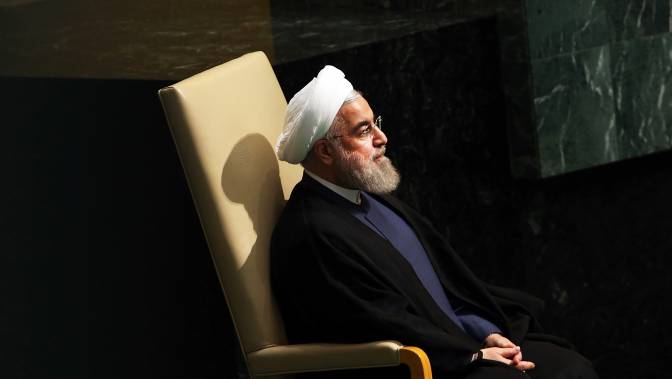
Negotiators working with Iran to ensure it keep its nuclear program peaceful announced a major breakthrough on Thursday, on the framework for an agreement.
In the proposed agreement, Iran’s ability to produce a nuclear bomb would drastically decrease. Experts believe that Iran is capable of conducting an atomic explosion in less than three months, this deal, if finalized in June would extend that breakout time to about one year, and that year-long breakout period would be in place for at least ten years.
Iran has also agreed to cut down on the number of centrifuges to one-third, and the number of centrifuges currently enriching uranium to one-half, from 10,000 centrifuges presently in operation to 5,060. Iran will also be expected to water down, and reduce its existing stockpile of enriched uranium.
As outlined in the framework agreement, Iran is expected to shut down its largest uranium-enriching reactor at Fordow, which until 2009 was kept hidden from the international community.
President Barack Obama said, “This deal is not based on trust. It’s based on unprecedented verification.” The President made it very clear, Iran will have to give unprecedented access to all of their declared civil as well as previously undeclared military nuclear facilities to the IAEA to ensure there is no chance that it can secretly pursue a nuclear weapons program. The President said, “Iran will face strict limitations on its program, and Iran has also agreed to the most robust and intrusive inspections and transparency regime ever negotiated for any nuclear program in history.”
In exchange for Iran agreeing to roll back its nuclear program, the United States has promised to lift sanctions on the country, which forced them to begin negotiations with the P5+1 last year.
The IAEA will verify each step Iran takes to rollback its nuclear weapons program, and for each step successfully accomplished, the United States and EU will lift sanctions on the country. If Iran is found in violation of the agreement, or refuses IAEA inspectors access to facilities, the sanctions will immediately snap back into place.
This is truly an historic moment for all of us. In Pakistan the news of an understanding between Iran and the P5+1 is well received, and being celebrated.
If this framework agreement is finalized by June, it will mean that the United States has succeeded in preventing a possible nuclear arms race in the Middle East, and has ensured peace and stability in the region for at least another 15 years, which is a colossal accomplishment.
For Pakistan, it could mean economic prosperity on the horizon. If the deal is put in place, we could possibly see progress on the Iran-Pakistan-India gas pipeline, a project that was shelved after Iran was hit with tough economic sanctions following the 2009 discovery of the Fordow reactor. It could mean alleviating the energy shortage in Pakistan as well as add millions, possibly billions of dollars to the economy. Another possibility is more Chinese trade through Pakistan to Iran, and through Iran to Turkey. Increased trade could also mean more economic interdependence between countries in the region, in turn making the region more peaceful and prosperous.
This is a great alternative to another war in the Middle East, and therefore great news for all of the countries in Iran’s neighborhood. The framework agreement may not be perfect, but it is a great start towards a new, more peaceful Middle East. The world applauds the United States and Iran on their efforts to come to an agreement, and is looking forward to a final understanding by June.
***